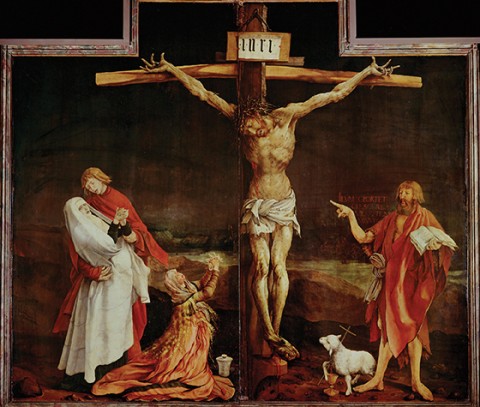Crucifixion, by Matthias Grünewald

Photo © Erich Lessing / Art Resource, NY
Matthias Grünewald (ca. 1480–1528) painted the Crucifixion as a panel for the Isenheim Altarpiece in the hospital chapel of St. Anthony’s monastery. The monastery hospital specialized in the treatment of ergotism, an especially painful skin disease. The Christ figure in the painting is depicted as suffering from these same sores—a sign to the patients that Christ shared in their afflictions. To Christ’s right, Mary Magdalene kneels in humble adoration and a swooning Mary is supported by the apostle John, the Beloved Disciple. To Christ’s left stands John the Baptist, holding an open book and pointing at the crucified Christ. In the background in Latin are words attributed to John the Baptist in the Gospel of John: illum oportet crescere, me autem minui (“He must increase, but I must decrease”). At John’s feet is a lamb with a cross, echoing other words by the Baptist, also recorded in John: “Behold the Lamb of God who takes away the sin of the world.” Karl Barth kept a reproduction of the Crucifixion in his study to remind himself that his role as a theologian was to point to Christ and him crucified.





